
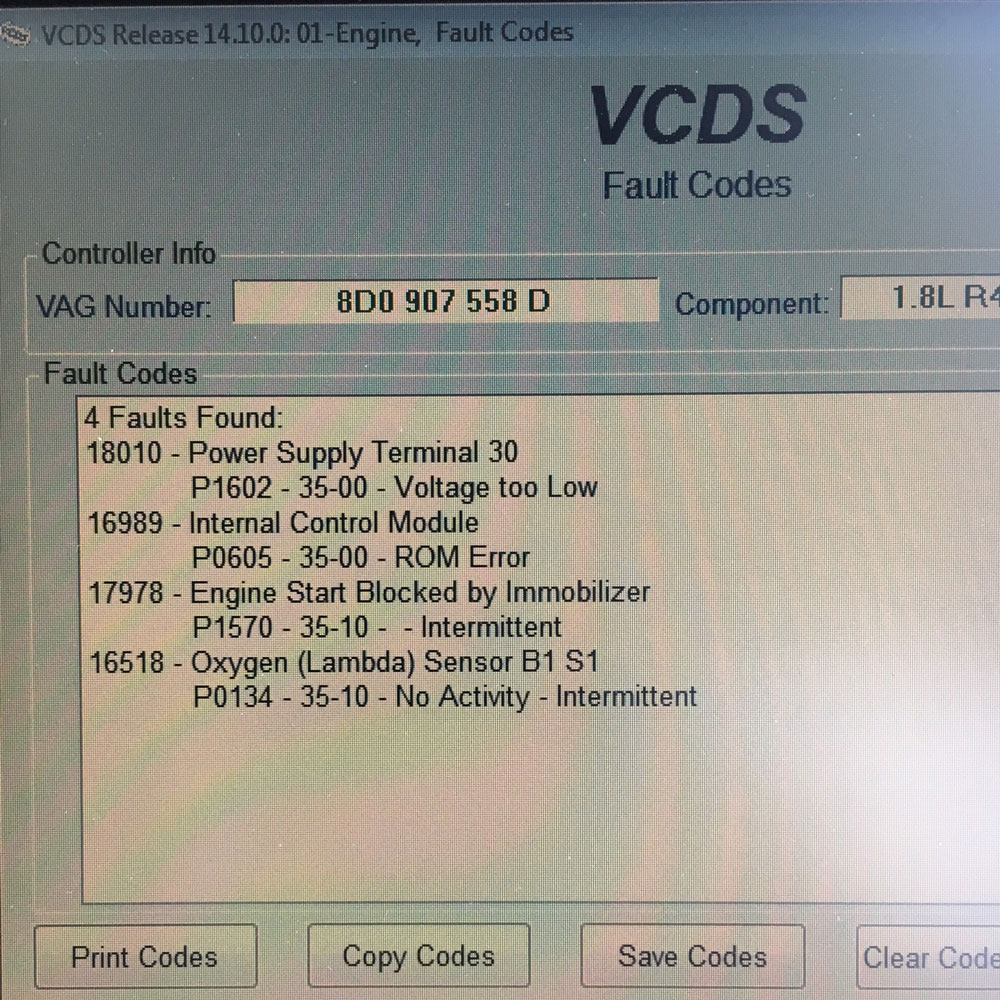
If you’ve scanned your Audi and discovered the dreaded P1602 Audi fault code, you’re probably wondering what it means, how serious it is, and what steps you need to take to fix it. Don’t worry—you’re not alone. This is one of the more common error codes found in Audis and Volkswagens, and it’s often linked to electrical or power supply issues.
In this guide, we’ll walk you through everything you need to know about the Audi P1602 fault code—from what causes it, how to diagnose it correctly, and how to fix it permanently without wasting time or money.
Table of Contents
ToggleThe P1602 Audi fault code is a diagnostic trouble code (DTC) that indicates a problem with the power supply to the Engine Control Module (ECM). Specifically, it refers to a voltage drop or loss at Terminal 30, which is the main battery power supply line that provides constant 12V power to the ECM—even when the ignition is turned off.
P1602 – Power Supply Terminal 30: Voltage Too Low
This means the ECM has detected that the voltage supplied to it through Terminal 30 has dropped below the acceptable threshold for proper operation. This voltage drop could be momentary (such as during a battery swap) or sustained (due to wiring issues, poor connections, or a dying battery).
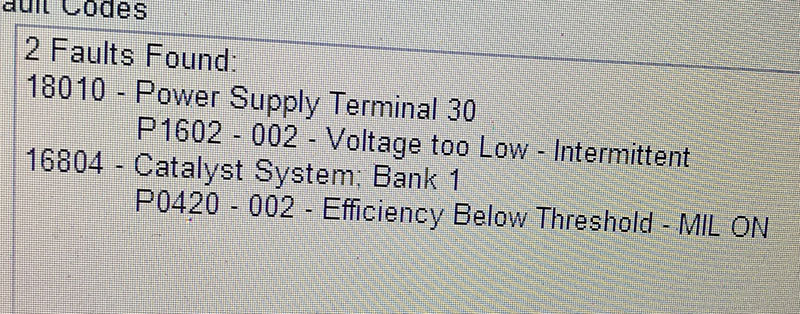
In automotive electrical systems, Terminal 30 is a designation used to identify circuits that receive constant battery voltage, regardless of ignition key position. It is crucial for:
Supplying standby power to the ECM
Maintaining memory (like adaptive learning, DTCs, and settings)
Enabling the vehicle to start and run reliably
If Terminal 30 becomes unstable or drops out—even briefly—the ECU may reset or behave erratically, triggering Audi error P1602.
You might encounter the audi code P1602 in a variety of situations:
After replacing or disconnecting the battery
If the battery voltage drops too low during cranking
When the vehicle stalls unexpectedly
Due to poor battery ground or power supply connections
If there’s corrosion or damage in the wiring leading to the ECM
The ECM stores the fault code even if the issue was momentary—so you may not notice symptoms right away, but the DTC remains in memory.
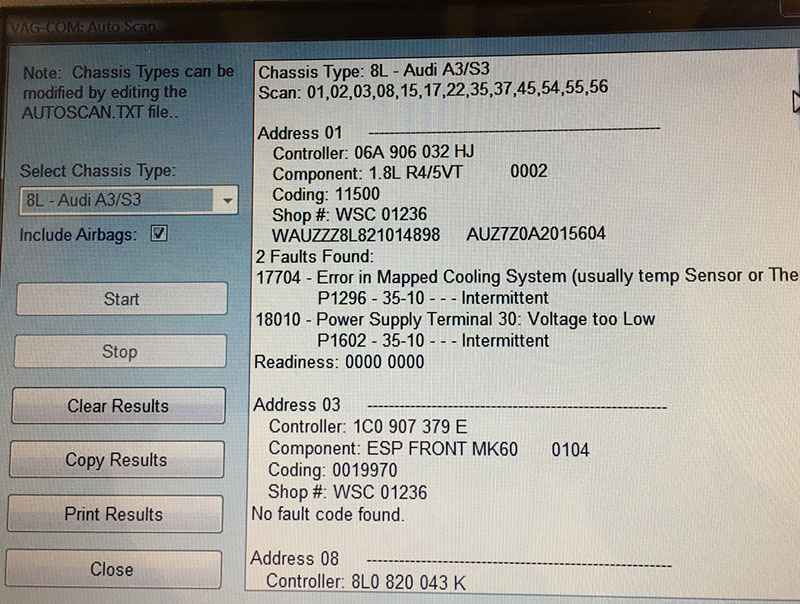
Modern ECUs are equipped with voltage monitoring logic that constantly tracks the electrical supply on key input lines like Terminal 30. If:
The voltage drops below the threshold (typically ~9.5V or less)
The dropout lasts more than a few milliseconds
Then the ECM logs P1602, marking it as a power supply interruption or undervoltage fault.
This protects against erratic ECU operation, data corruption, or unpredictable engine behavior that could occur during low-voltage conditions.
A stable and uninterrupted 12V power supply is essential for all major ECU functions, including:
Fuel injection timing
Ignition system control
Communication with modules (ABS, TCU, BCM, etc.)
Immobilizer and anti-theft logic
When P1602 Audi fault code is active, it’s a sign that the ECM might have been compromised, or at least not functioning with full reliability.
This fault code appears in a wide range of Audi vehicles and VW models:
Audi A3, A4, A6, A8
Audi TT
Audi Q3, Q5, Q7
Volkswagen Golf, Passat, Jetta
Skoda Octavia, Superb (platform shared)
Vehicles built between 2000 – 2016 are most commonly affected.
The Audi P1602 fault code is not just a random warning—it’s your car telling you that the brain of the vehicle (the ECU) has lost power at a critical point. While sometimes triggered by a simple battery swap or a momentary voltage drop, it can also point to deeper electrical problems if it recurs.
Fixing Audi error P1602 promptly ensures your vehicle remains reliable, responsive, and free from further electronic or starting issues.
When audi code P1602 is present, you may notice one or more of the following symptoms:
Vehicle fails to start or cranks slowly
Engine stalls while driving
Dashboard flickers or resets
Clock resets to default time
Check Engine Light (CEL) stays on
Additional fault codes related to low voltage or ECU communication
Sometimes, you might not notice any symptoms at all—especially if the low voltage event was brief and occurred during battery replacement.
Is Audi Error P1602 Dangerous?
While Audi error P1602 won’t usually leave you stranded, it’s a sign that your ECU isn’t receiving stable power. This can affect performance, fuel economy, or safety systems. If ignored, intermittent stalling or no-start conditions could occur, leaving you in an inconvenient or unsafe situation.
The P1602 Audi fault code, officially defined as “Power Supply Terminal 30: Voltage Too Low,” is triggered when the Engine Control Module (ECM) detects an abnormal drop in its main power supply. Terminal 30 is designed to provide a constant 12V power directly from the battery, regardless of the ignition switch position. If the ECM detects this voltage dropping below a specific threshold (usually under 9.5V), even momentarily, it will log the audi code P1602.
Below are the most common and technical causes behind this fault:
A worn or undercharged battery is one of the leading causes of this fault. When voltage drops too low during engine cranking (especially on cold starts), the ECM registers an undervoltage event at Terminal 30. A battery with internal resistance or sulfated plates can drop from 12.5V to below 9V under load.
Common signs:
Slow cranking
Dim lights
Battery older than 3–4 years
P1602 often appears after a battery is replaced or disconnected without using a memory saver. The brief voltage interruption is enough for the ECM to log a low-voltage event, especially if no clear-reset procedures were followed post-installation.
Corrosion at the terminals or loose cable connections can intermittently disrupt the 12V supply, especially under vibration. Even if voltage at the battery reads normal, the ECM may be seeing fluctuating power, which causes instability.
Grounds are just as important as power wires. A damaged or oxidized engine ground strap or ECM ground point can create voltage drop across the system, which results in voltage imbalance at the ECU. Many technicians overlook this, but a poor ground is often the silent culprit.
The Terminal 30 power path usually includes a fuse located in the engine bay fuse box or interior fuse panel. If this fuse is partially blown or has poor contact, it can interrupt ECU voltage momentarily. It’s essential to test not just for continuity, but also for voltage drop across the fuse.
Many Audi vehicles use a relay to route power from the battery to Terminal 30 at the ECU. A faulty relay with burned or sticking contacts can cut off voltage supply under load. Relays may fail intermittently before complete failure, making diagnosis tricky.
The wire leading from the battery or fuse box to the ECM (Terminal 30 wire) can become frayed, pinched, or corroded—especially in areas prone to water ingress (like the plenum chamber or under the battery tray). Over time, this increases resistance, reducing the effective voltage at the ECU input.
Check for:
Pinched or cracked insulation
Rodent damage
Water intrusion near ECM housing
Though P1602 is directly related to Terminal 30, a failing alternator may not keep the battery adequately charged, leading to slow voltage decay and a drop during startup. If the alternator isn’t producing sufficient amperage under load (e.g., with A/C, lights, and fans running), voltage at the ECU may drop below spec.
On some older Audi platforms, the ignition switch plays a role in relay triggering. If the switch intermittently cuts power to the ECM relay or starter circuit, it may cause a sudden ECU reset, resulting in the P1602 code.
In very rare cases, the fault lies within the ECU itself. Internal voltage regulation circuits or solder joints on the board can degrade due to heat, vibration, or moisture exposure. If all external circuits are tested and confirmed healthy, and P1602 still returns, the ECU may need inspection, re-flashing, or replacement.
These tools help you read the P1602 code, view freeze frame data, scan for related DTCs, and clear the code after repairs.
| Tool | Purpose |
|---|---|
| VCDS (VAG-COM) | Advanced Audi/VW diagnostics, module access, live data |
| ODIS Service/Engineering | OEM-level diagnostics, ECU flashing, battery registration |
| Autel MaxiSys / MaxiCOM | Professional-grade universal scanner with Audi coverage |
| Launch X431 | Full-system diagnostics and live data on German vehicles |
| iCarsoft VAG II or MB V3.0 | Budget-friendly for scanning and clearing codes |
Tip: For advanced work like ECU pin testing or reflashing, ODIS or VCDS are strongly recommended.
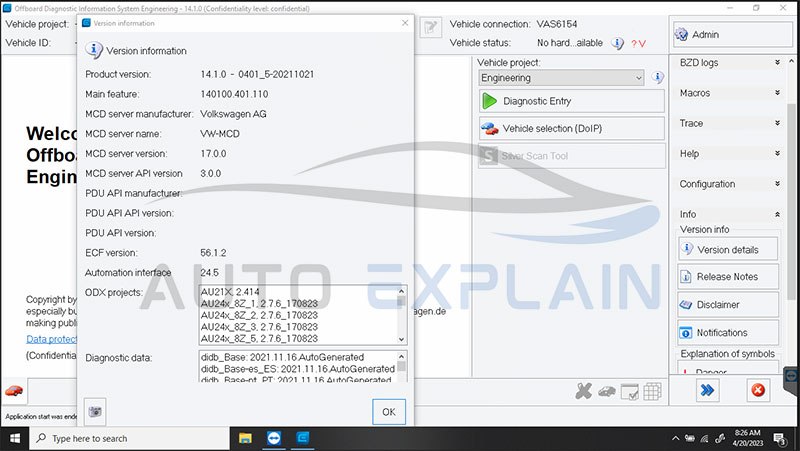
=> Click here to Download ODIS Service
=> Click here to Download ODIS Engineering
To test battery condition, Terminal 30 voltage, fuses, grounds, and wiring integrity.
| Tool | Purpose |
|---|---|
| Digital Multimeter | Measure voltage, continuity, and resistance (must-have!) |
| Battery Load Tester | Test battery under simulated cranking load |
| Test Light | Quickly check for power and ground on fuses or relays |
| Back Probe Pins or Piercing Probe | Access ECU connector safely for voltage tests |
| OBD2 Battery Memory Saver | Prevent ECU memory loss during battery replacement |
To remove panels, access wiring, clean terminals, and replace components.
| Tool | Purpose |
|---|---|
| Socket & Ratchet Set (Metric) | Remove battery, ECM cover, or fuse panels |
| Torx Drivers (T20–T30) | Remove trim and ECM mounting hardware |
| Wire Brush & Terminal Cleaner | Clean corroded battery terminals and grounds |
| Dielectric Grease | Prevent future corrosion at electrical contacts |
| Cable Tie / Electrical Tape | Secure repaired or cleaned wiring |
Understanding the Terminal 30 power path from battery → fuse → relay → ECU requires a reference.
Elsawin / Mitchell / AllData: Access to wiring schematics and fuse locations
| Tool | Use |
|---|---|
| Oscilloscope | Analyze voltage drop or intermittent signal loss in real time |
| Relay Tester / Jumper Tool | Quickly test relays feeding Terminal 30 |
| OBD Battery Registration Tool | Required for new battery installation on some models (Audi B8/B9, Q5, etc.) |
Gloves (for battery acid or corrosion cleanup)
Eye protection (when working around battery terminals or fuses)
Insulated pliers (when handling battery cables)
Properly diagnosing the P1602 Audi fault code requires a systematic approach focused on the vehicle’s electrical system—especially the constant battery power supply (Terminal 30) to the Engine Control Module (ECM). Since this code is often triggered by low voltage or intermittent power supply issues, you’ll need to inspect battery condition, wiring integrity, grounds, and ECM voltage inputs.
Here’s how to do it step by step:
Step 1: Scan the Vehicle for All Stored and Pending DTCs
Before doing any physical inspection, use a high-quality diagnostic scanner (VCDS, ODIS, Autel, Launch, etc.) to read all fault codes, including:
Stored (current)
Pending
Intermittent
Freeze Frame data
Look for associated codes, such as:
These related codes can provide clues about whether the issue is limited to power supply or extends into module communication or security systems.
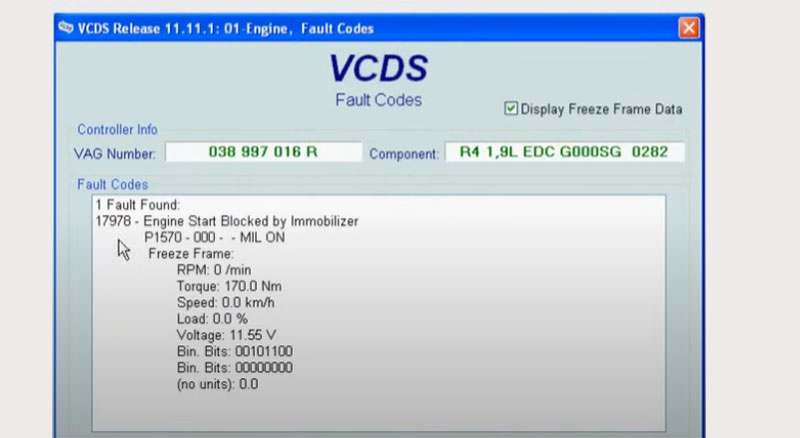
Step 2: Check Battery Voltage & Health
Use a multimeter to test battery voltage:
Engine OFF: 12.4V – 12.7V is normal
During Cranking: Should not drop below 9.6V
Engine Running: 13.7V – 14.5V indicates proper charging
If voltage is too low during cranking or idle, the battery may be weak or the alternator undercharging.
Also consider:
Load testing the battery
Checking battery age (older than 3–4 years = replace)
Step 3: Inspect Battery Terminals & Cables
Check for:
Corroded terminals (green or white deposits)
Loose clamps
Frayed or damaged battery cables
Clean terminals with a wire brush and apply dielectric grease after tightening. Poor terminal contact is a common cause of intermittent ECU power issues.
Step 4: Inspect Ground Points
Faulty grounds are a silent cause of voltage drop. Pay close attention to:
Battery-to-chassis ground cable
Engine block ground strap
ECM-specific ground points (usually mounted on chassis near the ECU or fuse box)
Check for:
Rust or oxidation
Loose bolts
Broken or frayed cables
Use a multimeter to measure resistance between the negative terminal and engine block—should be under 0.2 ohms.
Step 5: Check Fuses & Relays for Terminal 30
Locate the fuse and relay that feed Terminal 30 to the ECU:
Typically found in the main engine fuse box or under the dashboard
Use the wiring diagram specific to your Audi model/year
Test the fuse:
With multimeter or test light
Look for signs of overheating or melting
Measure voltage on both sides of the fuse (should be the same)
Test the relay:
Swap with a known-good relay (if identical type available)
Check for clicking during ignition ON
Measure voltage output at the relay’s output pin (should supply 12V to ECU)
Step 6: Test Terminal 30 at the ECU Connector
Locate the ECU harness connector and identify the Terminal 30 wire using a wiring diagram.
Set multimeter to DC volts
Back-probe the Terminal 30 pin (usually a red or red/white wire)
Check voltage:
Should read 12V+ at all times, even with ignition OFF
If lower or intermittent, trace the power path backward (to battery/fuse/relay)
This confirms whether the ECU is truly receiving stable power.
Step 7: Inspect Wiring Harness for Damage
Physically inspect the wiring between:
Battery → Fuse Box → Relay → ECU
Look for:
Cracked insulation
Moisture corrosion (especially under battery tray or in plenum chamber)
Rodent damage or abrasion
Burned wires near the firewall or fuse box
Use continuity mode on a multimeter to check for voltage drop or open circuits across each segment.
Step 8: Check Alternator Output
Although not a direct Terminal 30 source, a failing alternator can:
Cause voltage dips
Undercharge the battery
Lead to repeated P1602 errors, especially after engine starts
Test alternator output with all accessories ON:
Headlights
A/C
Rear defroster
Voltage should remain above 13.5V under load. If it drops below 13V, the alternator may be underperforming.
Step 9: Reflash ECU (Optional – Advanced)
If:
Power and grounds are all OK
Wiring is intact
Fuse and relay are good
Battery is new and well charged
But P1602 still returns—consider reflashing the ECU using ODIS Engineering or VCP to reset the power management logic and eliminate software glitches.
=> => You can contact AutoExplain via WhatsApp +1(936)2896695 for ECU reflashing support
Step 10: Suspect a Faulty ECU (Last Resort)
If all inputs are clean, consistent, and the fault still recurs:
Inspect ECU internally (for burnt components, corrosion)
Try a known-good ECU (with proper immobilizer pairing)
Replace only after all other possibilities have been ruled out
The P1602 Audi fault code indicates a loss of voltage at Terminal 30, the permanent 12V supply line to the Engine Control Module (ECM). This voltage drop can be momentary or sustained, but it affects the ECU’s ability to operate reliably. Instead of guessing the cause, the most efficient way to fix this fault is to match the code to actual vehicle behavior. Below is a symptom-driven diagnostic and repair guide.
6.1.1. Common Cause:
ECM not receiving sufficient voltage at Terminal 30
Weak battery, damaged ground, or corroded terminals
6.1.2. How to Fix:
Test battery voltage with a multimeter:
Should read 12.4V – 12.7V (engine off)
Should not drop below 9.6V while cranking
If below spec, replace battery with the correct AH rating.
Clean battery terminals with a wire brush and apply dielectric grease.
Inspect ECM ground strap (battery to chassis, chassis to engine block). Remove, clean contact points, reinstall tightly.
Back-probe ECU connector for Terminal 30 pin. Confirm 12V constant is present (even ignition off).
If no power, trace wiring back to fuse box and relay. Repair any breaks, corrosion, or loose pins.
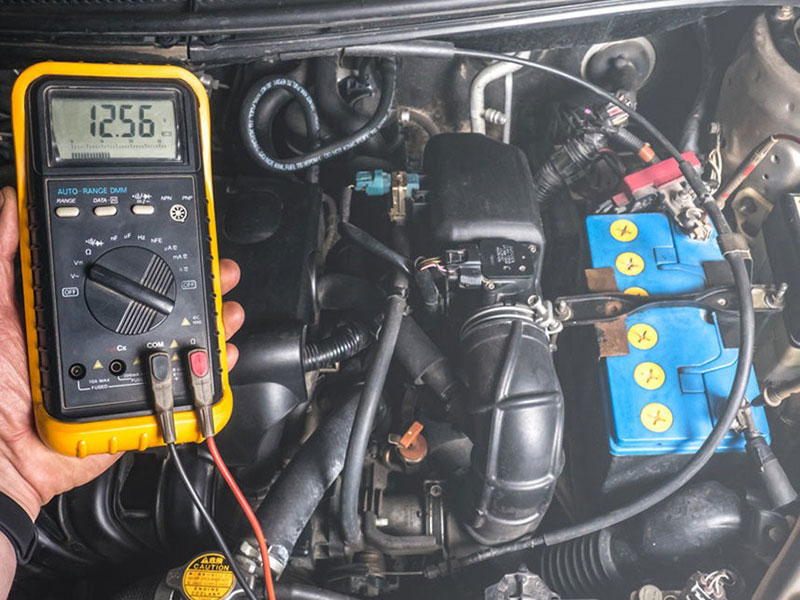
✅ Result: Once stable 12V is restored, ECU will receive power and the vehicle should start normally. Clear the P1602 code with a scanner.
6.2.1. Common Cause:
Sudden voltage loss at ECU due to battery disconnection
ECU logged P1602 during startup sequence with unstable power
6.2.2. How to Fix:
If battery was recently replaced or disconnected without a memory saver, this code is expected.
Use VCDS or ODIS to clear the code.
Perform battery adaptation if the vehicle uses Battery Energy Management (common in Audi B8/B9 platforms):
Go to Module 61 > Adaptation > Channel 4
Enter new battery serial number and capacity
Ensure battery terminals are tightened properly and clean.
✅ Result: No further action needed if vehicle operates normally and code does not return.
=> You can contact AutoExplain via WhatsApp +1(936)2896695 for battery adaptation coding support
6.3.1. Common Cause:
Voltage instability from failing alternator or loose fuse/relay for ECU
Brief ECM resets due to relay dropout
6.3.2. How to Fix:
With the engine running, check battery voltage:
Should be 13.7V – 14.5V
If it fluctuates below 13V under load, suspect alternator failure
Locate and test Terminal 30 relay in the fuse box (engine or cabin):
Swap with known-good relay
Confirm consistent voltage output
Remove and inspect ECU power fuse. Check for:
Melted plastic
Loose contacts
Corrosion
Clean fuse terminals or replace fuse if signs of overheating exist.
✅ Result: Once power delivery is stable, ECU will no longer reset. Clear the code and verify fix with a test drive.
6.4.1. Common Cause:
ECM lost synchronization with Immobilizer due to power reset
Key pairing temporarily lost
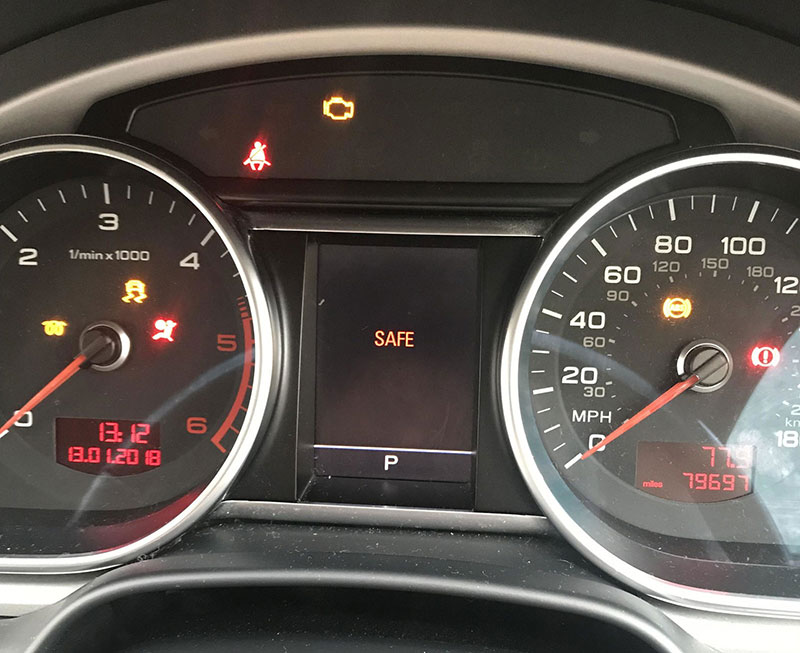
6.4.2. How to Fix:
Use VCDS or ODIS to read Immobilizer status:
Check for P1570 (Engine Start Blocked) or P1602 stored alongside
Fully charge or replace the battery to prevent voltage sag at startup.
Clear all related fault codes.
If vehicle still shows SAFE or won’t start:
Perform Immobilizer adaptation using Login/Security Code (PIN)
Match keys via Module 25 – Immobilizer or Module 17 – Instruments
✅ Result: After syncing keys and clearing faults, vehicle will start and display returns to normal.
6.5.1. Common Cause:
Terminal 30 loses voltage momentarily
Caused by ground degradation, loose relay, or corroded ECU wiring

6.5.2. How to Fix:
Inspect engine block ground near starter or under battery tray. Clean and tighten.
Replace ECU power relay if stalling occurs after 10–30 minutes of driving (typical heat-related relay failure).
Open ECU wiring harness. Look for:
Moisture ingress
Rodent damage
Cracked or burnt insulation
Repair or replace any damaged wires using proper crimp/solder techniques.
✅ Result: Restored power flow to ECU eliminates stalling. Clear code and monitor vehicle for 1–2 days.
6.6.1. Common Cause:
Intermittent low voltage event logged historically
ECU may have corrupted voltage learning logic
6.6.2. How to Fix:
Verify 12V constant at ECU with ignition OFF using a multimeter.
Use ODIS Engineering to reflash ECU firmware if:
No wiring, fuse, or relay faults found
P1602 returns after reset with no symptoms
As a last resort, replace ECU only if all inputs (battery, ground, wiring) test OK and reflashing fails.
✅ Result: Code cleared permanently after either firmware correction or ECU replacement.
=> You can contact AutoExplain via WhatsApp +1(936)2896695 to get help with ECU flashing
Case Study: A 2013 Audi A4 2.0T came into the shop with multiple warning lights and a P1602 code. The battery was only a year old.
After inspection, we found the ground cable under the battery tray was loose due to corrosion.
We cleaned the connection, applied dielectric grease, and reinstalled the cable.
After clearing the code with ODIS, the issue never returned.
Model: 2013 Audi A4 B8
Engine: 2.0 TFSI (CAEB engine)
Mileage: ~126,000 km
Reported Issue:
Car randomly dies while driving, especially when slowing down
Check Engine Light (CEL) is on intermittently
Clock and trip meter reset occasionally after cranking
Recently had the battery replaced at a general repair shop
Step 1: Initial Scan Using ODIS
The technician connected the ODIS Service software using an Odis-compatible VAS 6154 interface.
Module scanned: 01 – Engine Control Module
Stored DTC: P1602 - Power Supply Terminal 30: Voltage Too Low (Intermittent)
Freeze Frame showed:
Battery voltage at time of fault = 9.2V
Fault occurred during engine start
Ambient temperature = 5°C (cold start)
Additional Notes:
No other related DTCs like P0562 or U0100 were present
Battery voltage measured at 12.1V engine off, dropped to 9.3V while cranking
No immobilizer faults were logged
Step 2: Battery Test & Replacement
Since the battery dropped below 9.6V during cranking (minimum spec), the tech performed a load test. The result showed:
Battery capacity had degraded to ~40% of its rated Cold Cranking Amps (CCA)
➡️ Solution: Replaced battery with a genuine VARTA AGM 70Ah / 760A battery, suitable for BEM-equipped Audi models.
Step 3: Battery Adaptation in ODIS
After replacing the battery, the tech used ODIS Service to perform a Battery Energy Management (BEM) adaptation, required for Audi A4 B8:
Accessed: Module 61 – Battery Regulation
Performed adaptation:
Entered new battery serial number
Input battery type and capacity
Confirmed changes
Note: This step ensures the vehicle’s charging system and ECM track the new battery properly.
Step 4: Check Terminal 30 Voltage at ECU
With multimeter:
Engine OFF: 12.6V at ECU Terminal 30 pin
Engine ON: 14.2V (healthy alternator output)
No voltage drops observed over a 10-minute test cycle
Wiring harness to the ECU was also visually inspected — no damage, corrosion, or water ingress found.
Step 5: Clear Code and Retest
Using ODIS:
Cleared P1602 fault code
Performed ignition cycle: OFF → ON → OFF
Started engine, let it idle
Took vehicle on a 15-minute test drive under mixed loads
Re-scanned vehicle after drive: No codes returned
Final Result
Car started reliably afterward, even in cold weather
No more trip resets or CEL
Customer advised to check battery condition yearly moving forward
Technician logged the fix with full documentation in service record
“The P1602 code in this 2013 A4 was caused by a dying battery that dipped voltage too low during crank, triggering the ECM to log a low-voltage event. Replacing the battery and performing proper BEM adaptation with ODIS solved the problem permanently. Without ODIS, the system wouldn’t fully recognize the new battery, which might have led to charging inefficiency or repeat faults.”
✅ Result: Issue Fully Resolved
The root cause in this case was a combination of a weak unregistered battery and a degraded engine ground, which caused the ECM to lose voltage momentarily—especially during cranking or deceleration.
Lessons Learned:
Always register new batteries on BEM-equipped Audi models
Don’t overlook ground straps—they’re critical for voltage stability
A partially working relay may cause intermittent voltage dropout to the ECU
Very rarely. If:
All power and ground supplies are perfect
You have no blown fuses or bad relays
Battery and alternator are working
But the code returns persistently…
Then it could point to a fault in the ECU’s internal voltage regulation circuit.
In that case:
Try reflashing the ECU with ODIS Engineering or VCP
If unsuccessful, replace with a properly coded used or new ECU
Technically, yes—but it’s risky. If power supply to the ECU is interrupted while driving:
You could lose throttle control
ABS, steering assist, or airbags may behave erratically
The engine may shut off unexpectedly
Fixing Audi error P1602 should be a priority, especially if you’re experiencing symptoms like stalling or failure to start.
Maintain a healthy battery and check it annually
Clean terminals and grounds during service
Don’t disconnect the battery without powering down the car properly
Use battery memory savers during battery replacement
Avoid using low-quality aftermarket electrical parts
If you’re still stuck with audi p1602 and can’t track the issue, professional support can save you hours of frustration. At AutoExplain, we specialize in:
ECU Diagnostics & Programming
Power Supply & Wiring Inspection
Remote ECU Coding & Flashing Services (using ODIS, VCDS, Vediamo)
👉 Contact AutoExplain today to get expert help with P1602 Audi fault code and all your automotive diagnostic needs.
To summarize, P1602 Audi fault code is a power supply issue—most often caused by a weak battery, bad ground, or wiring fault. It’s not a major repair, but catching it early prevents engine control failures that could leave you stranded.
With proper tools and a systematic diagnosis, most audi p1602 faults can be fixed in under an hour.
Contact AutoExplain today for expert assistance:
WhatsApp: +1(936)2896695
Email: [email protected]
Website: AutoExplain


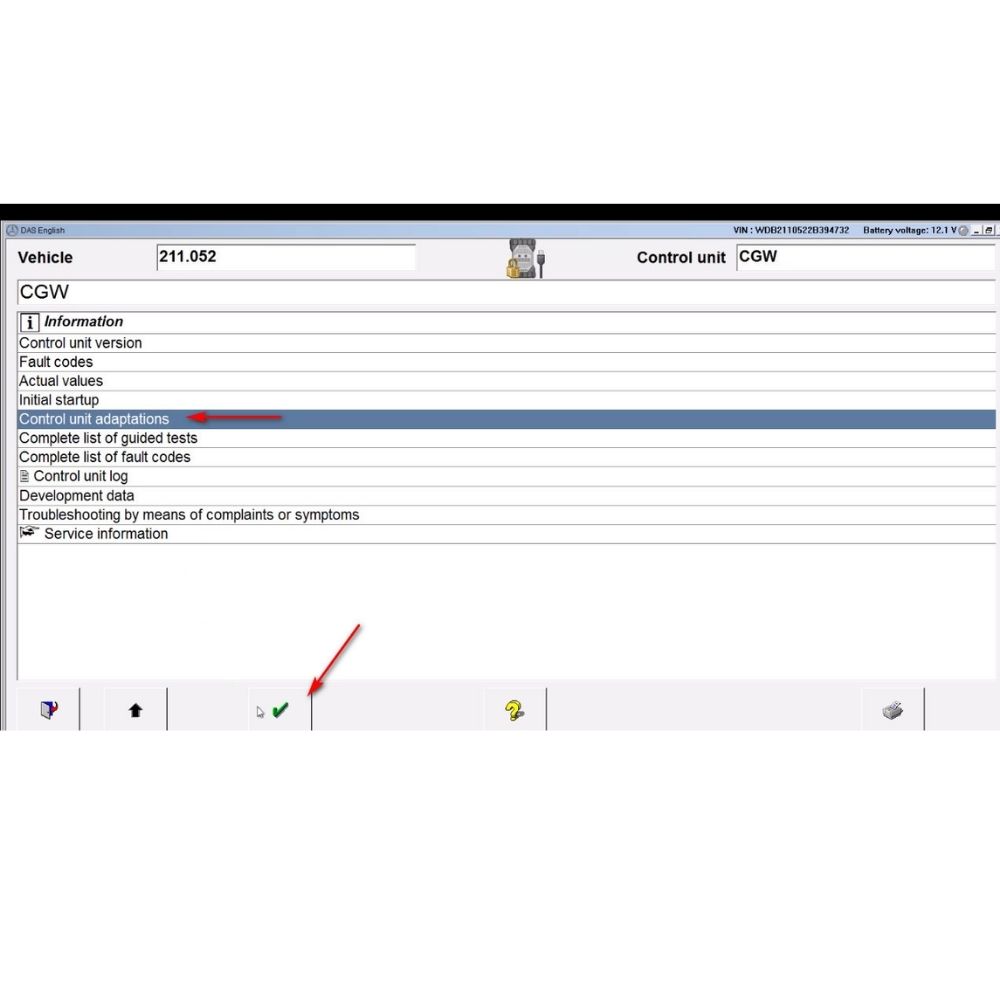


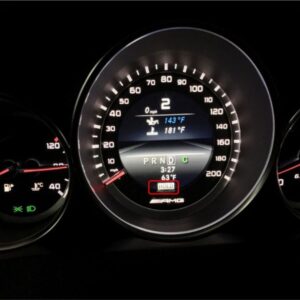


At AutoExplain, we provide automotive online repair service, auto repair tips, car repair manuals & document & training course to help mechanics of all experience levels—fix vehicles efficiently
AUTO EXPLAIN LLC
Employer Identification Number (EIN):
38-4349958
Whatsapp Us: +1(936)2896695
Gmail: [email protected]
Our Workshop: 1500 N Grant ST Sten Denver, Colorado, United States
Copyright 2025 © AutoExplain